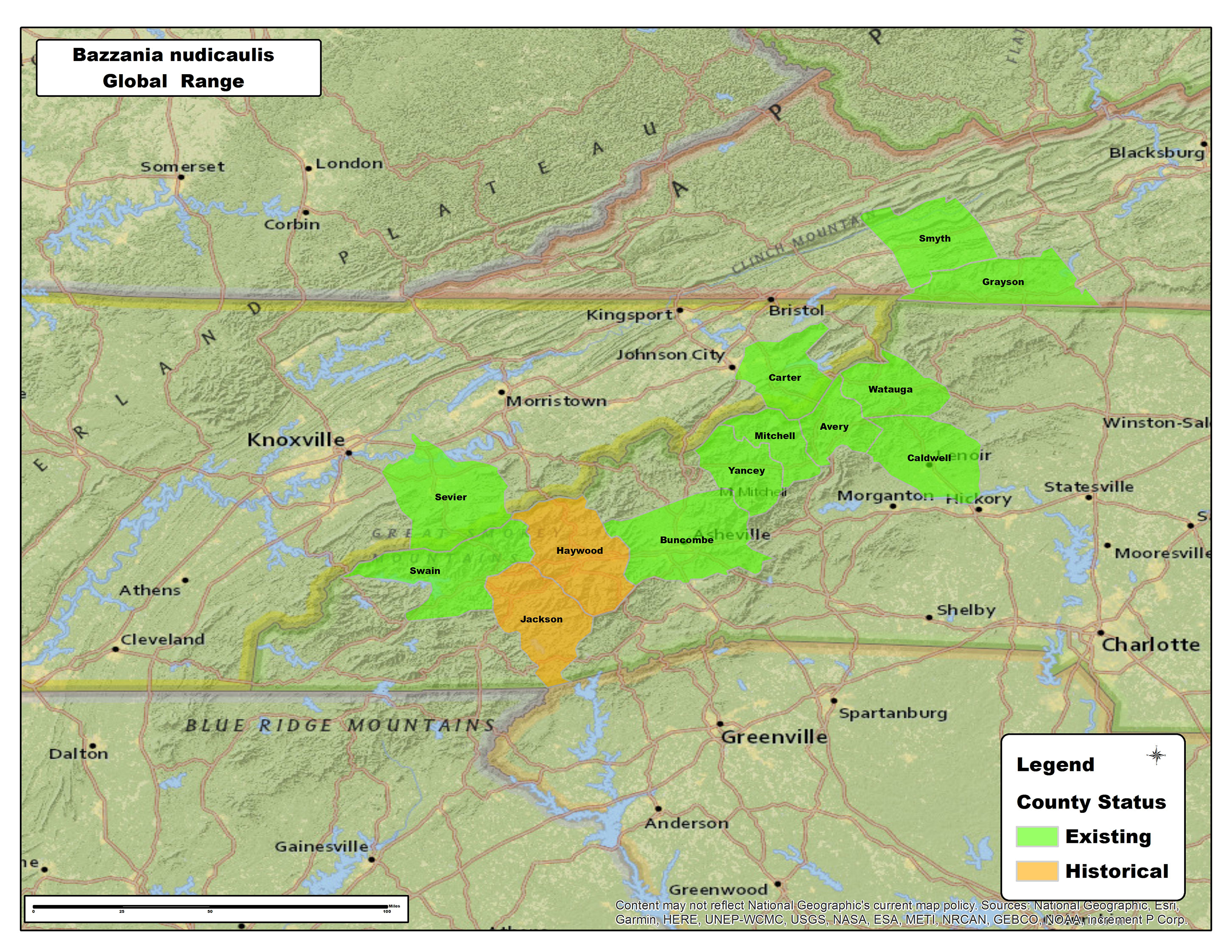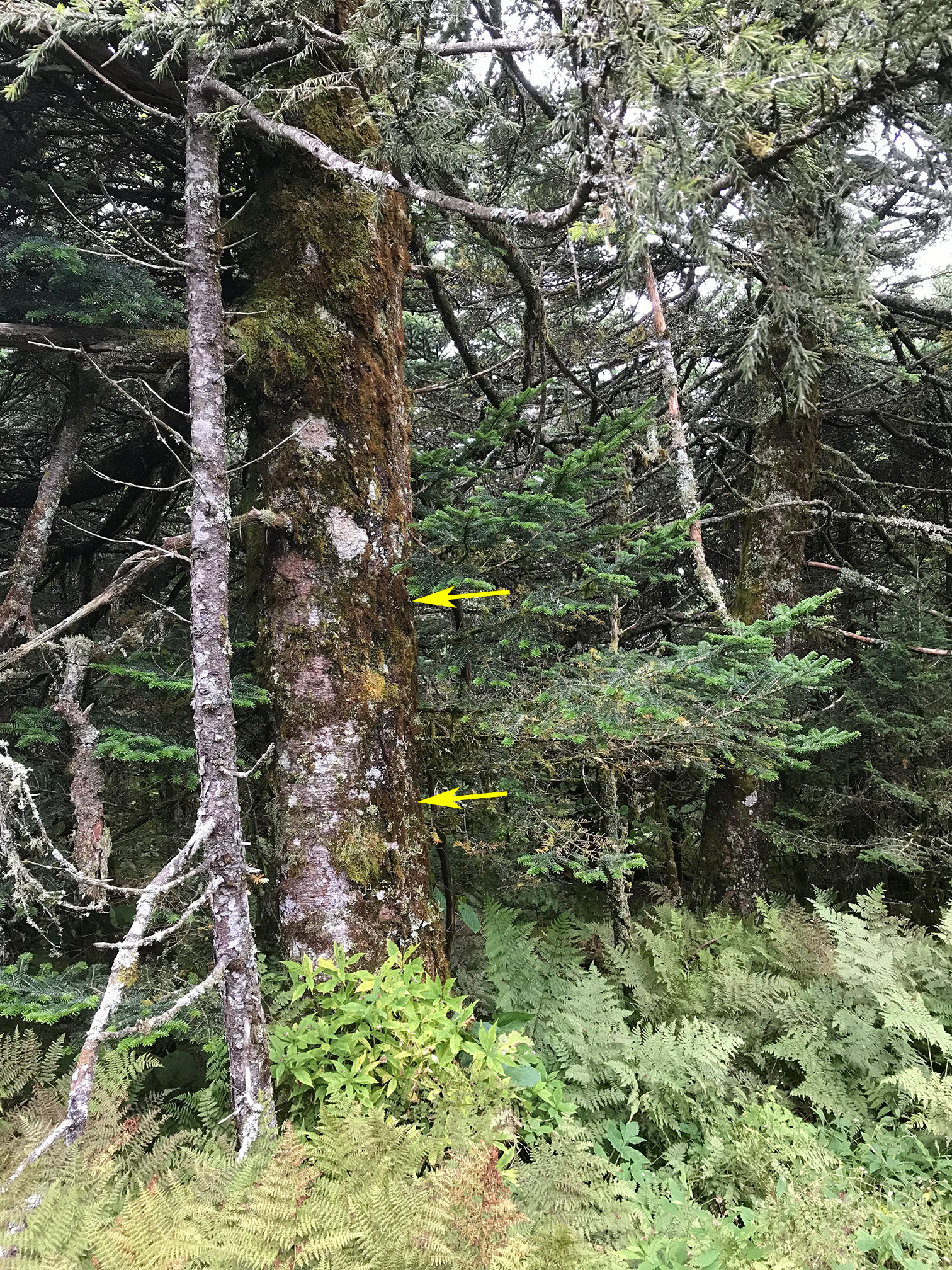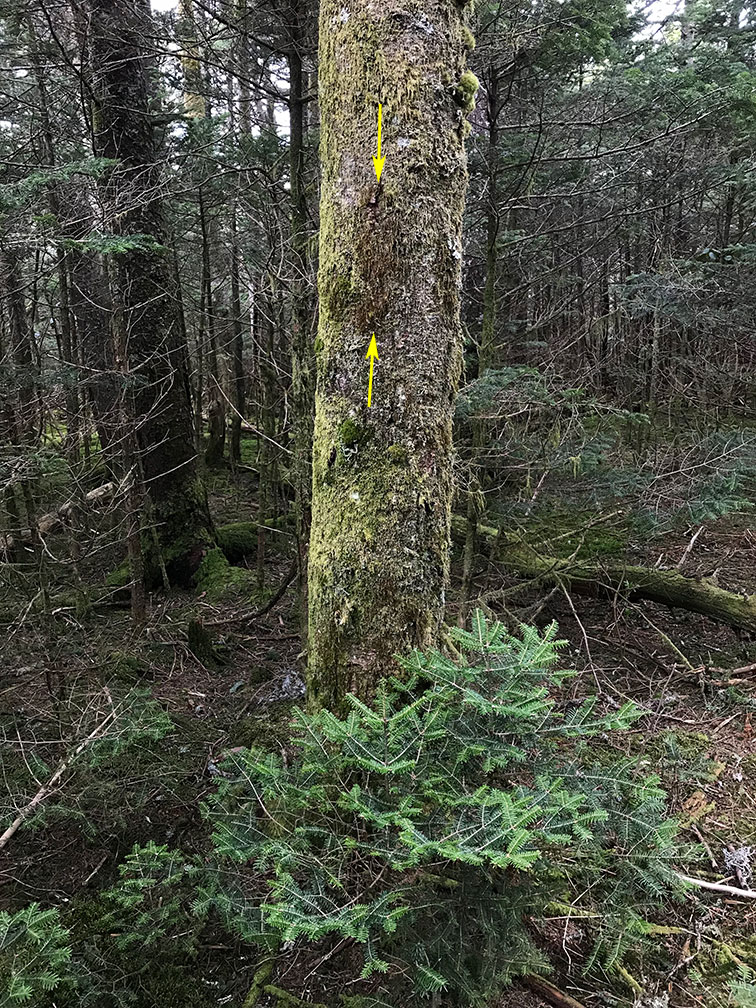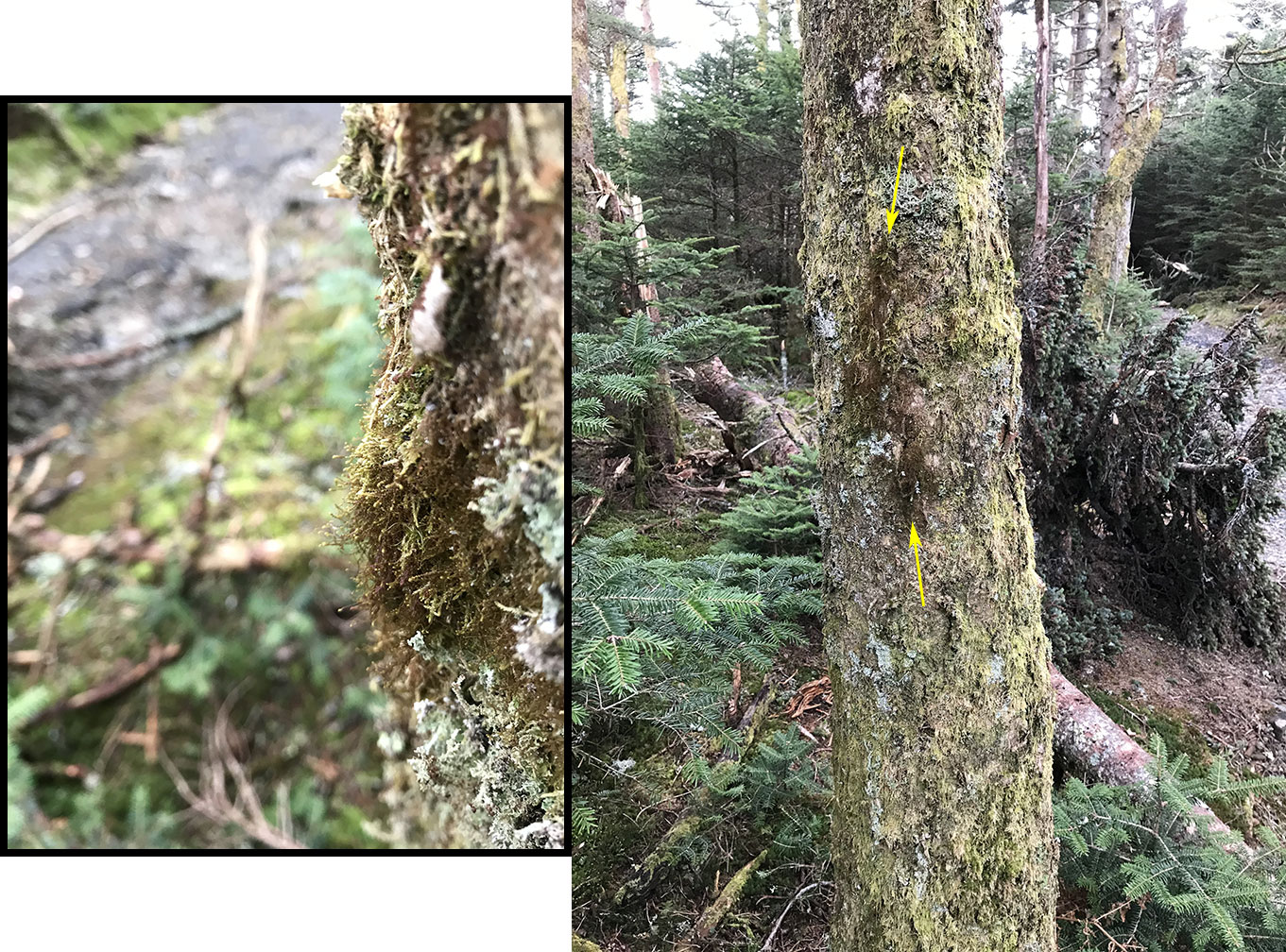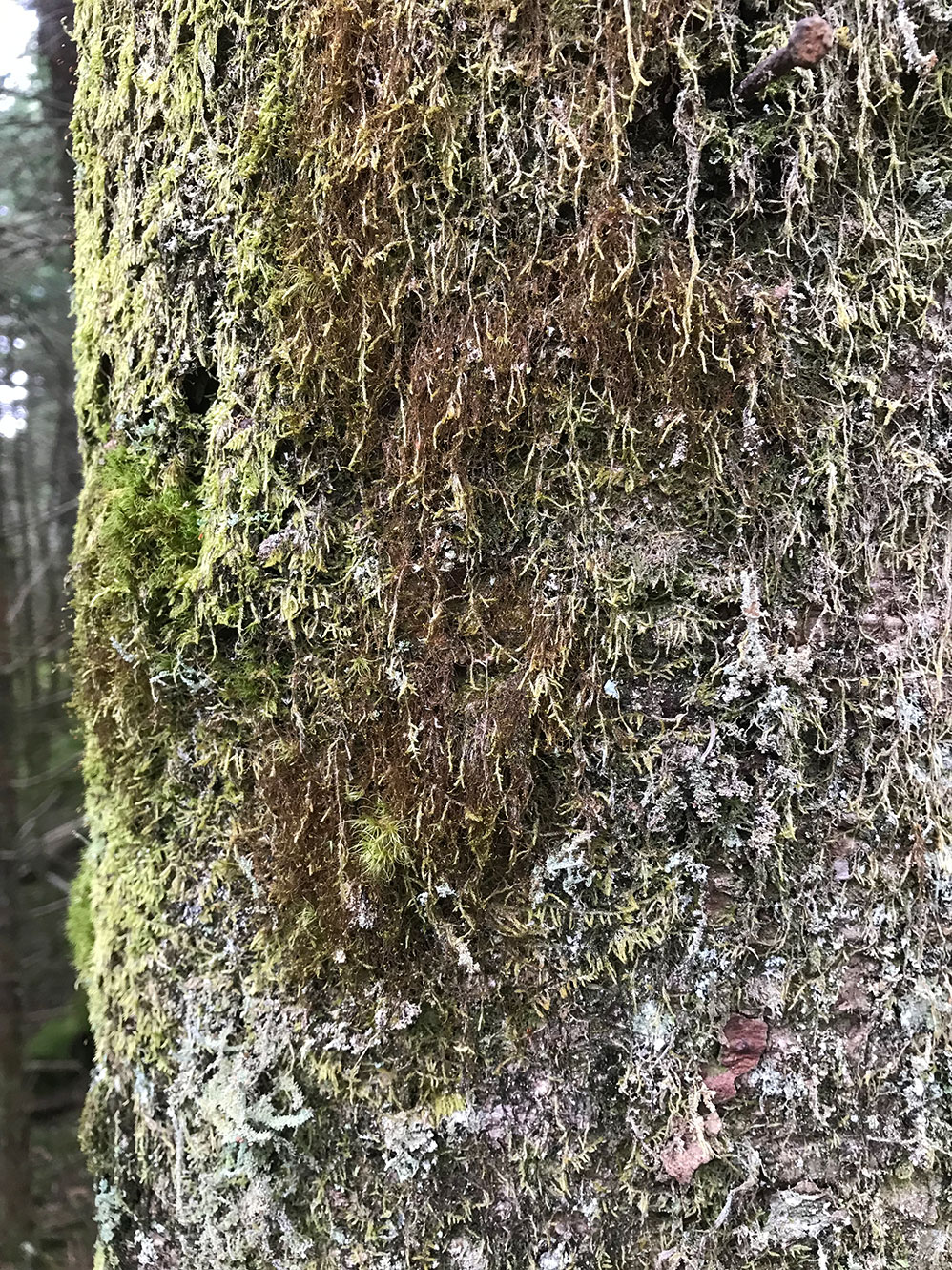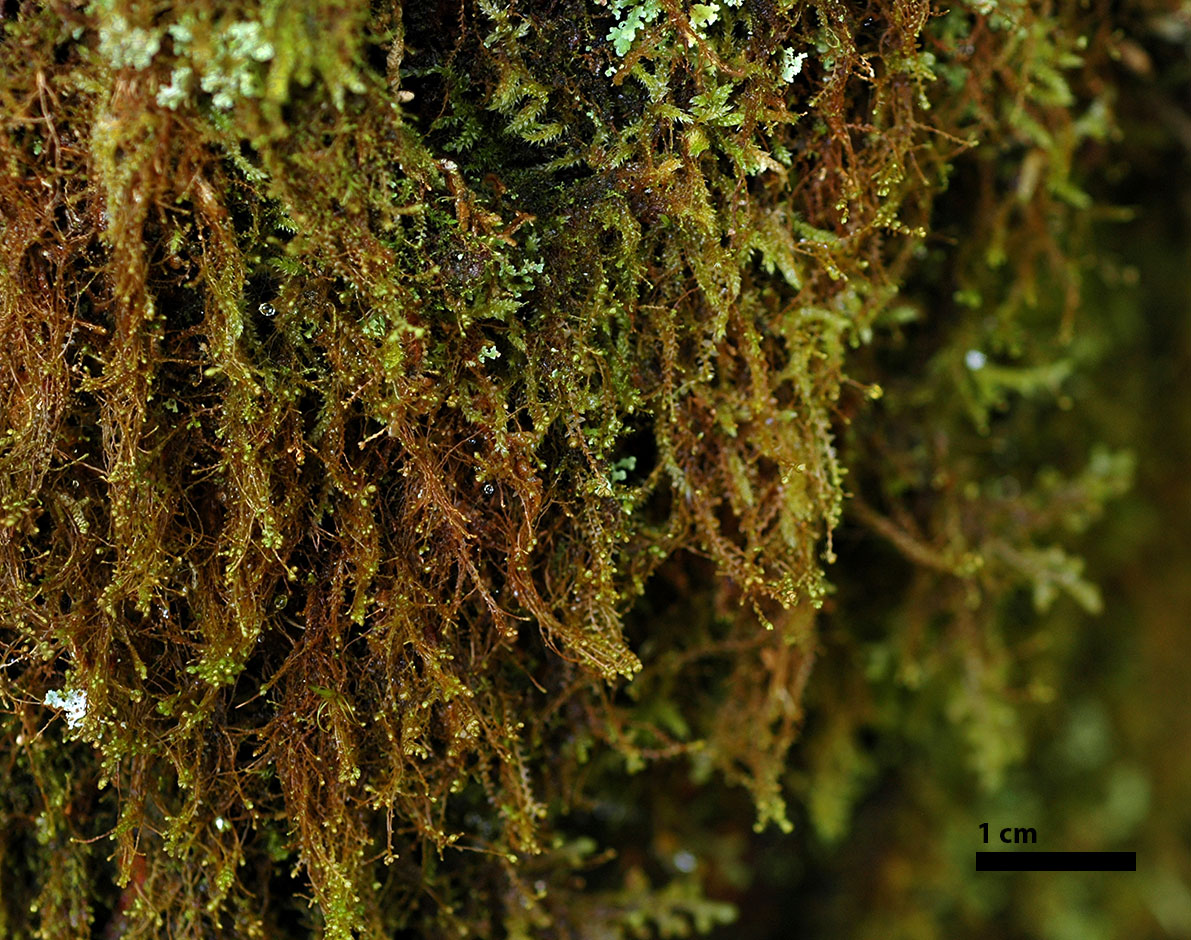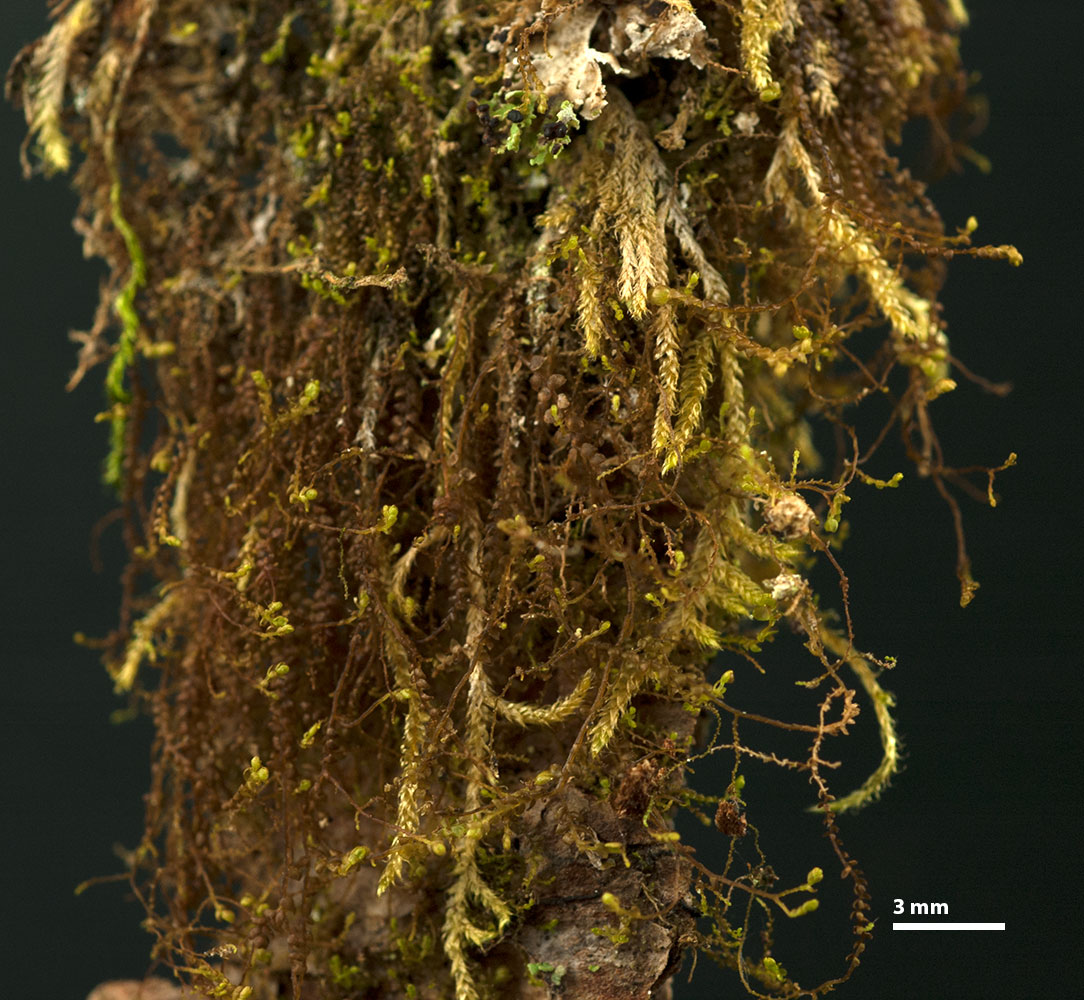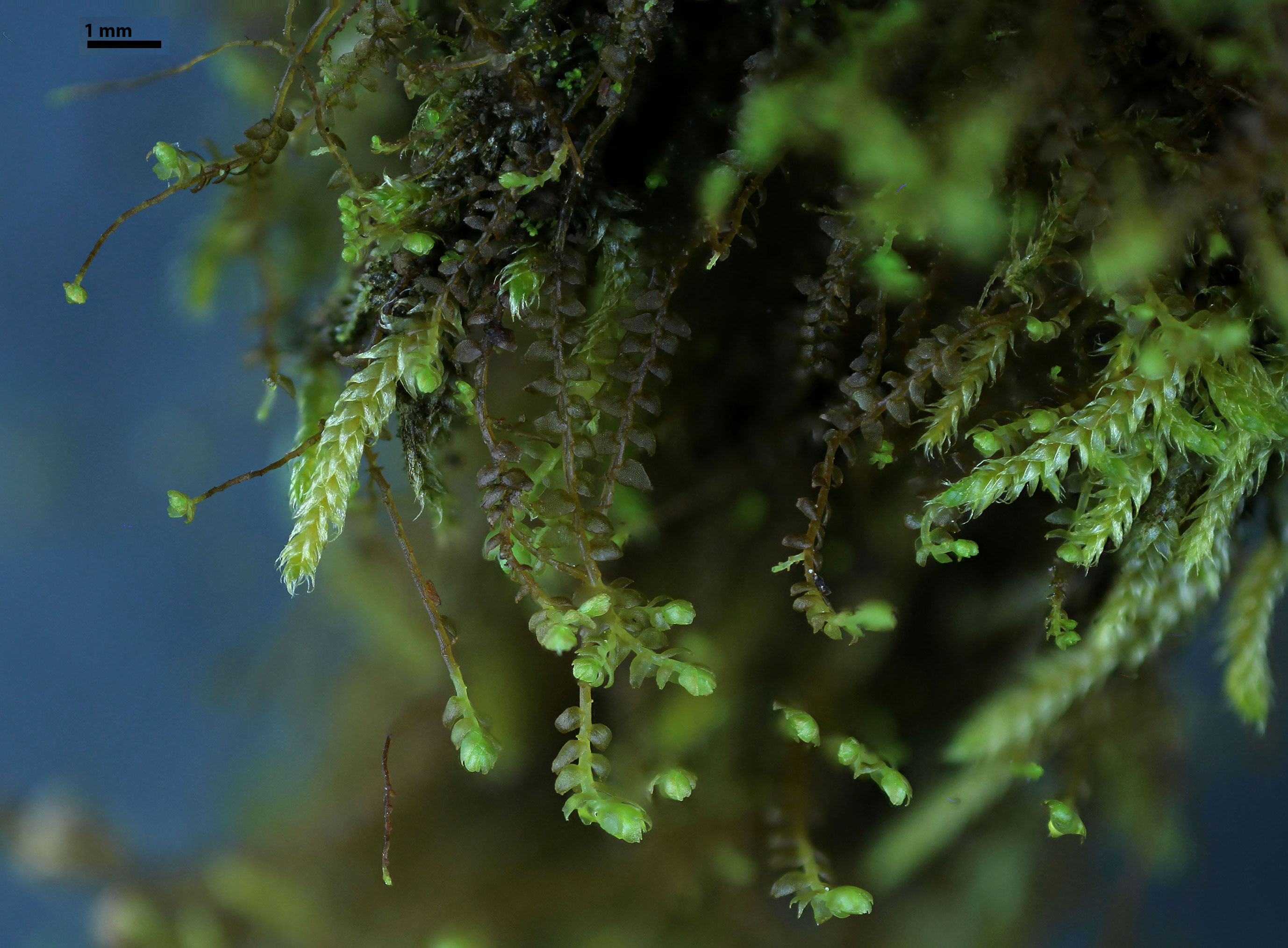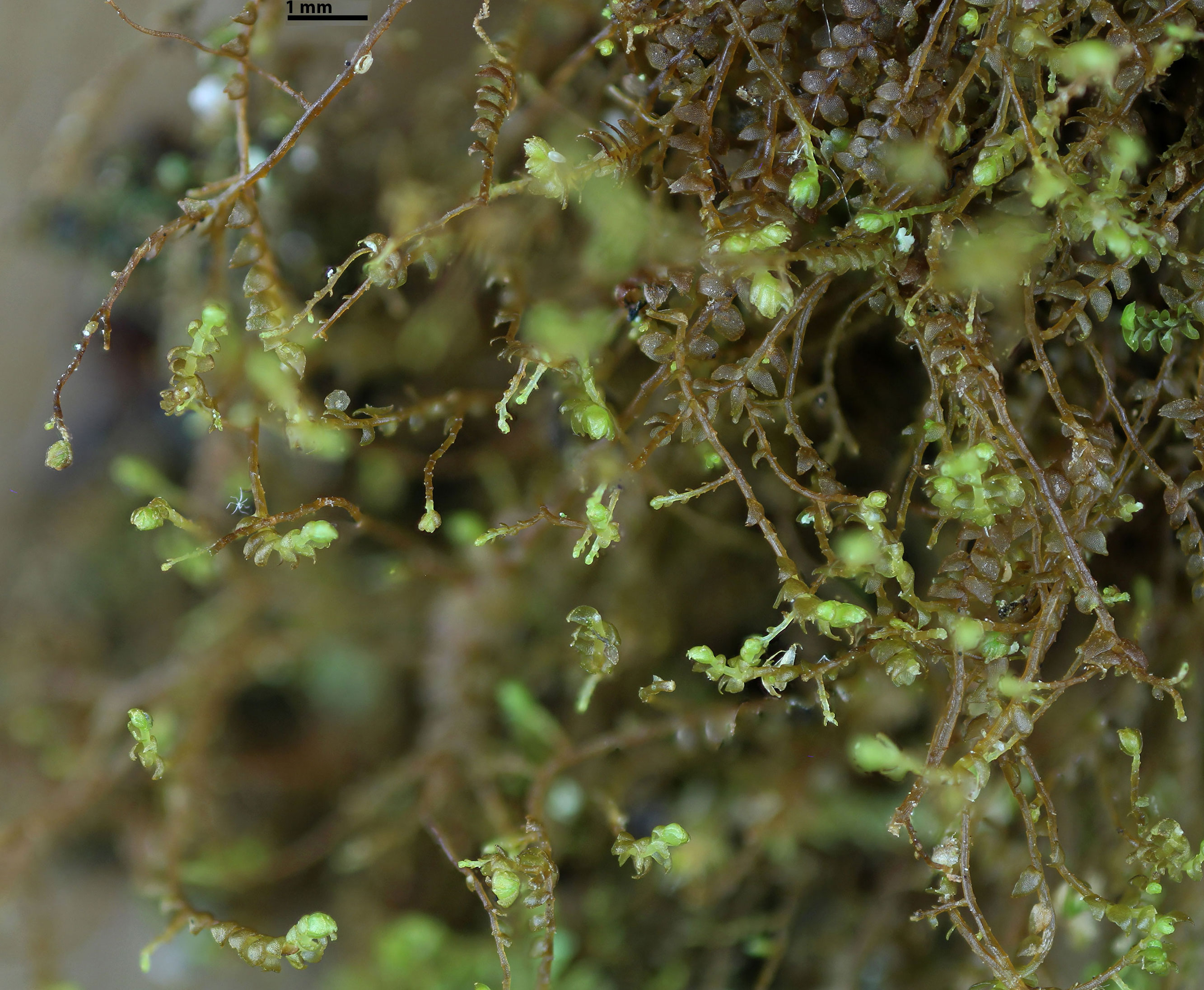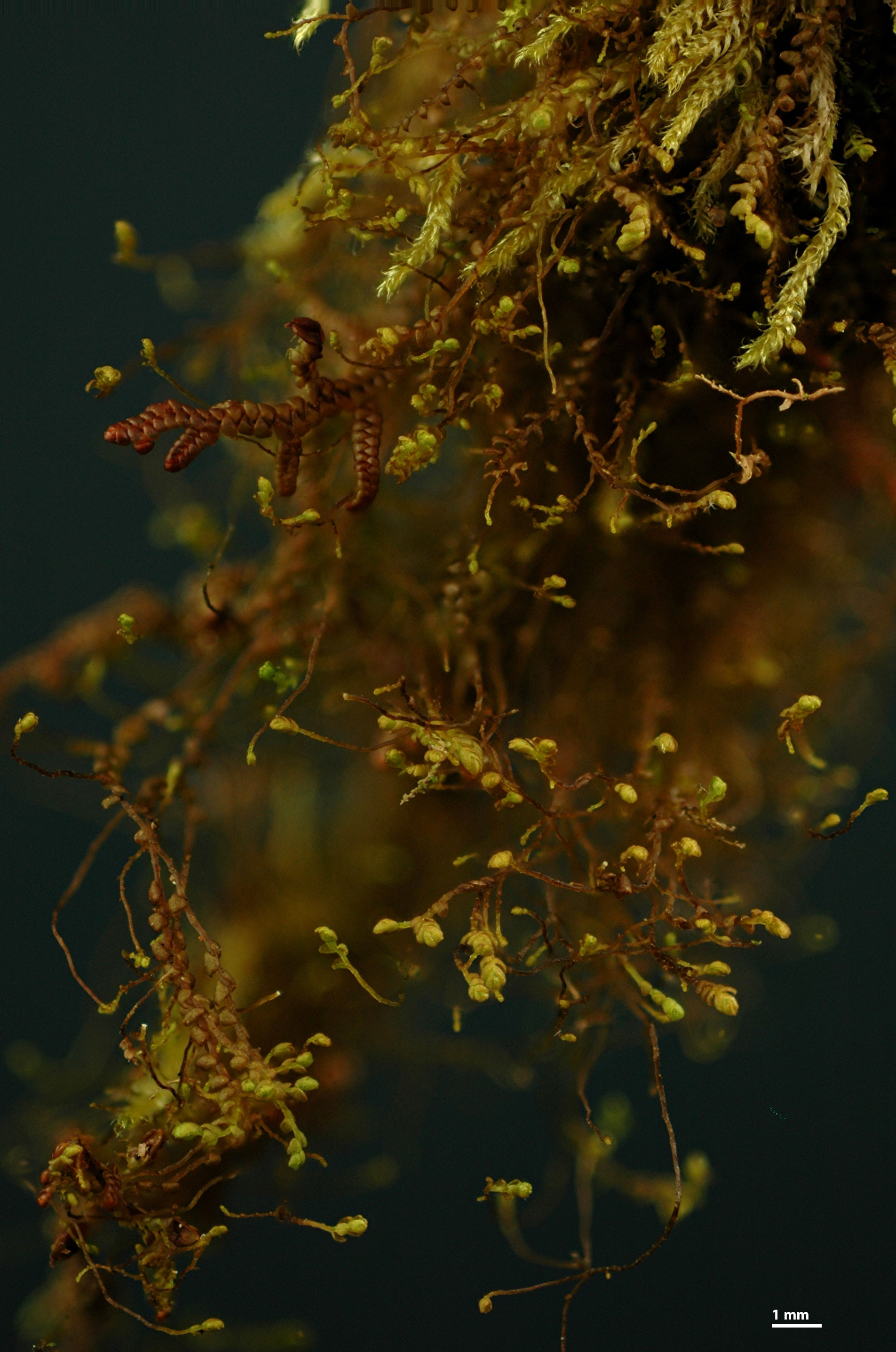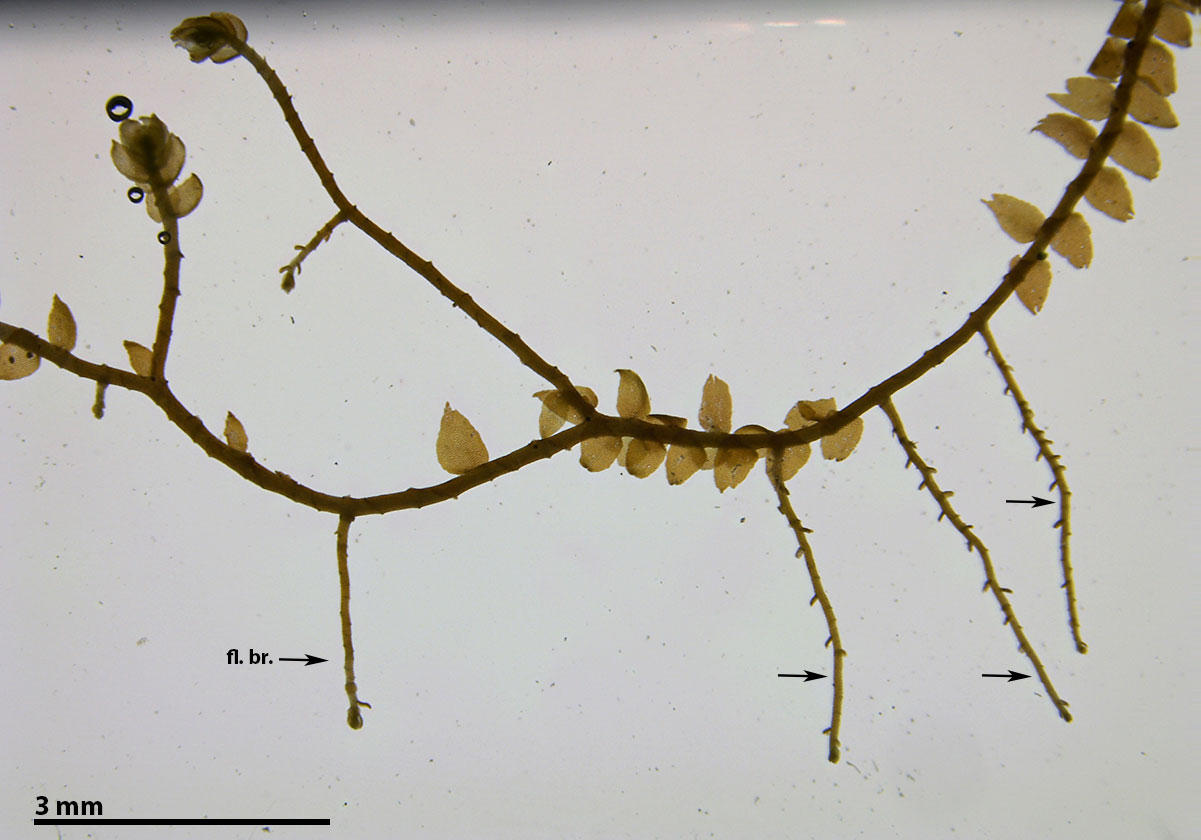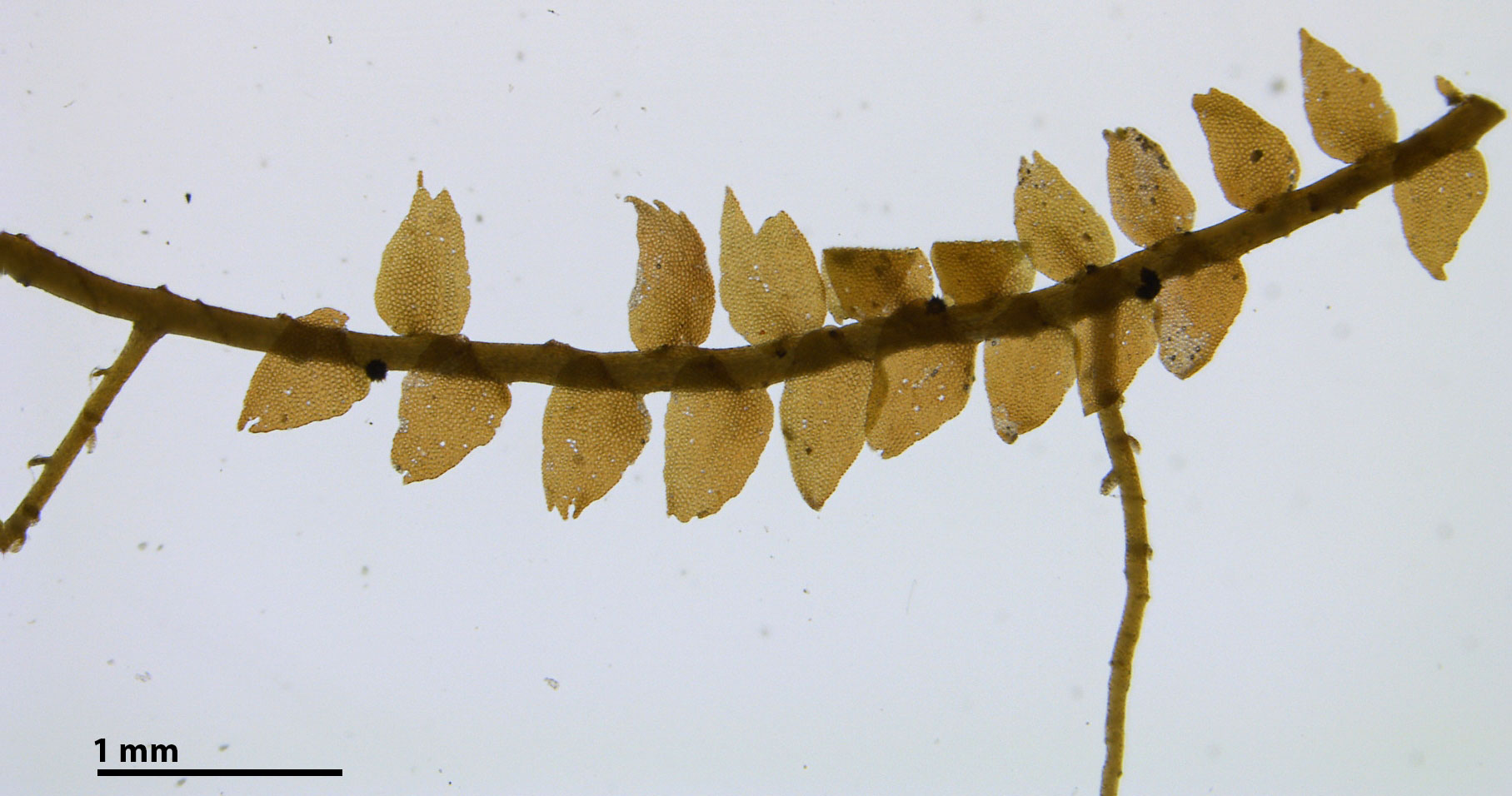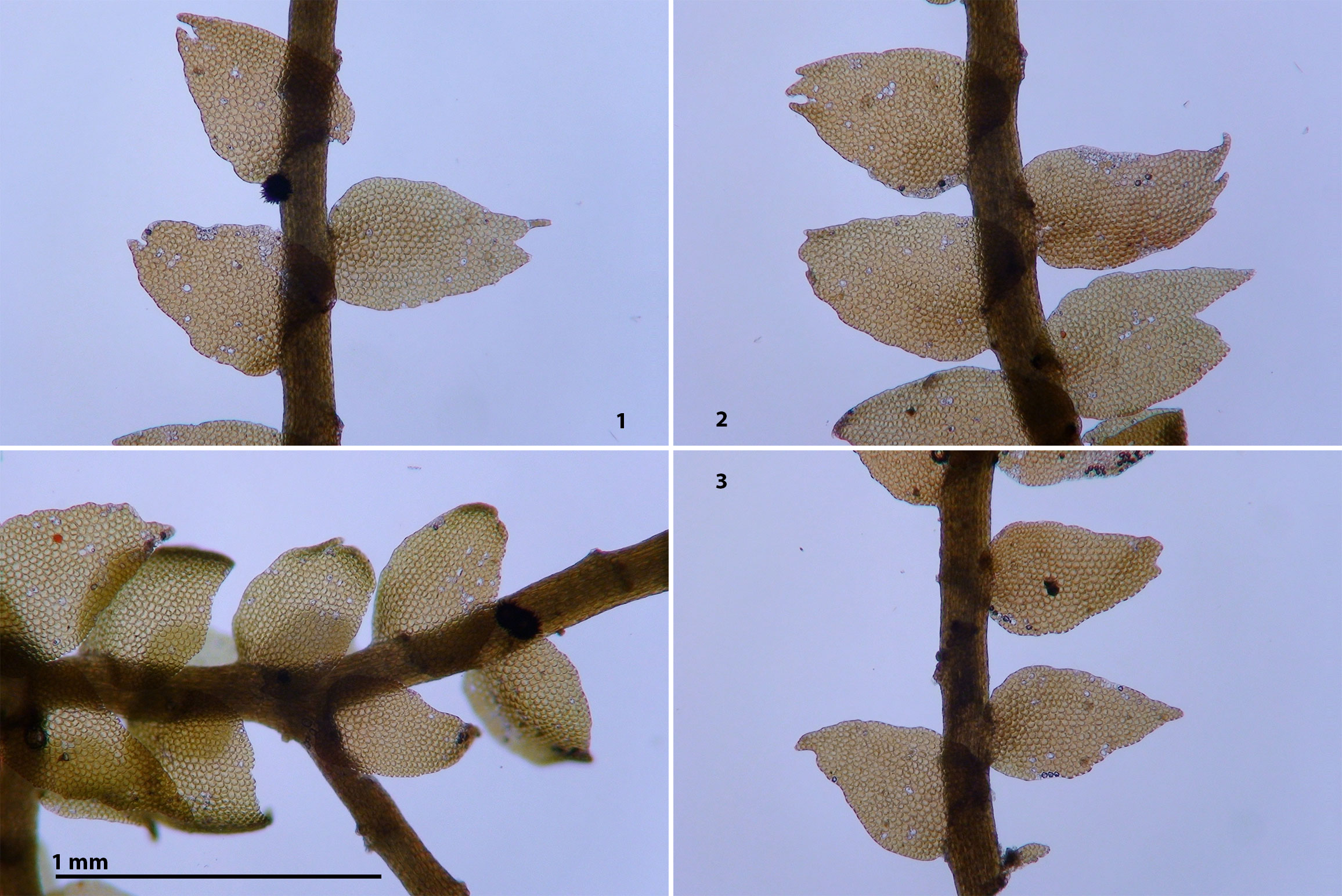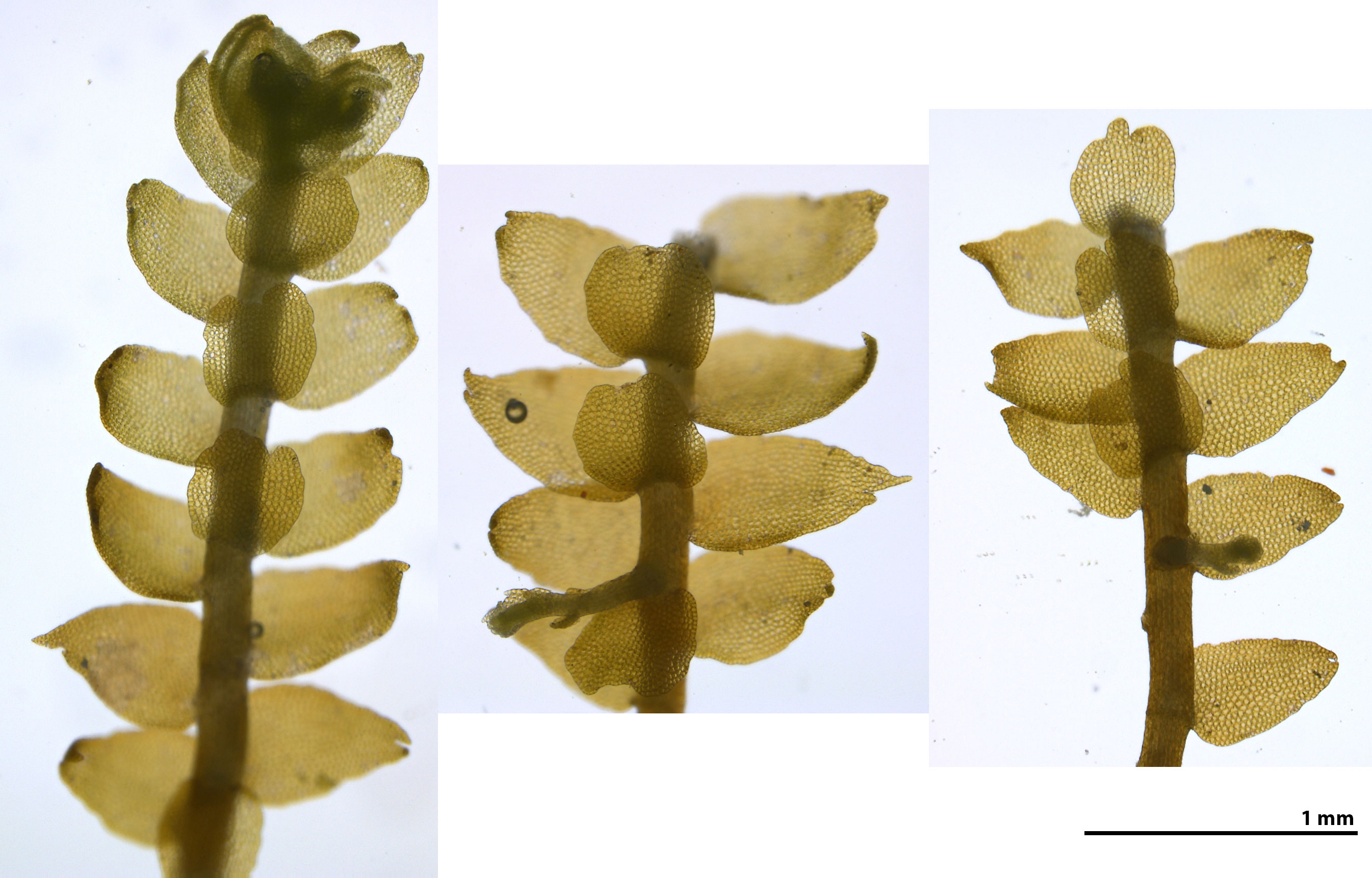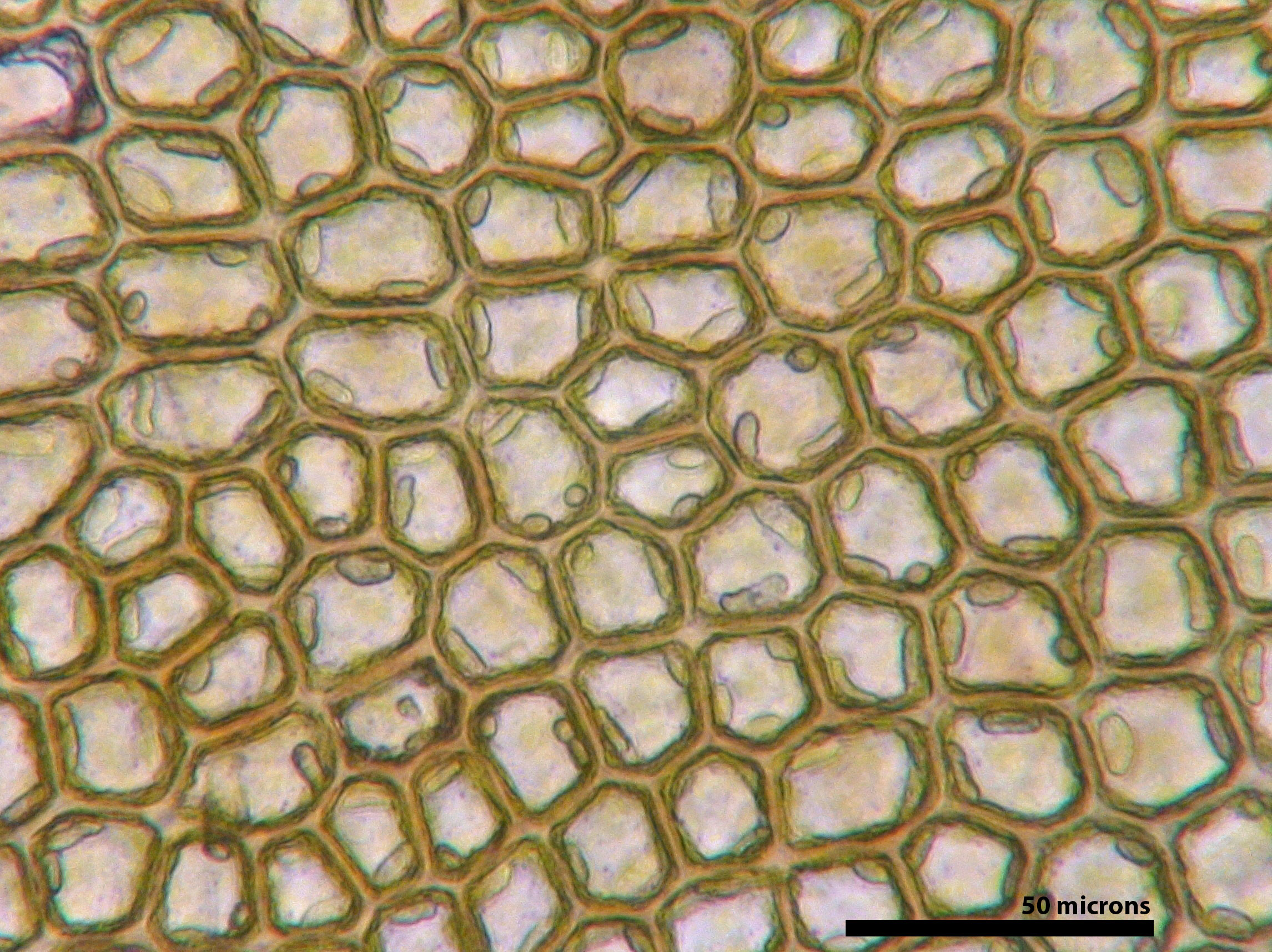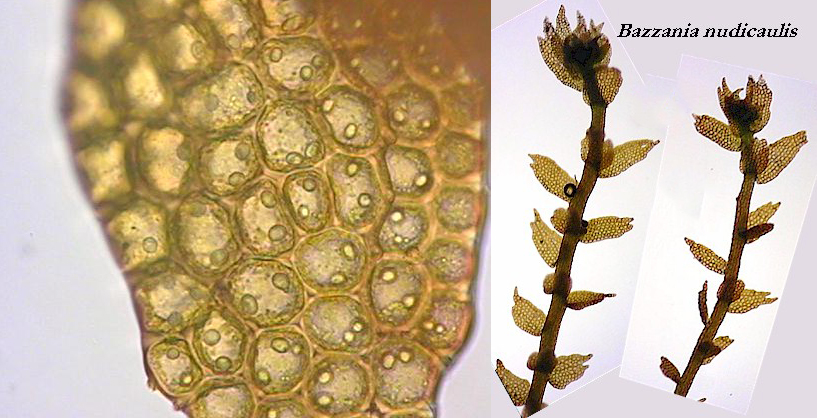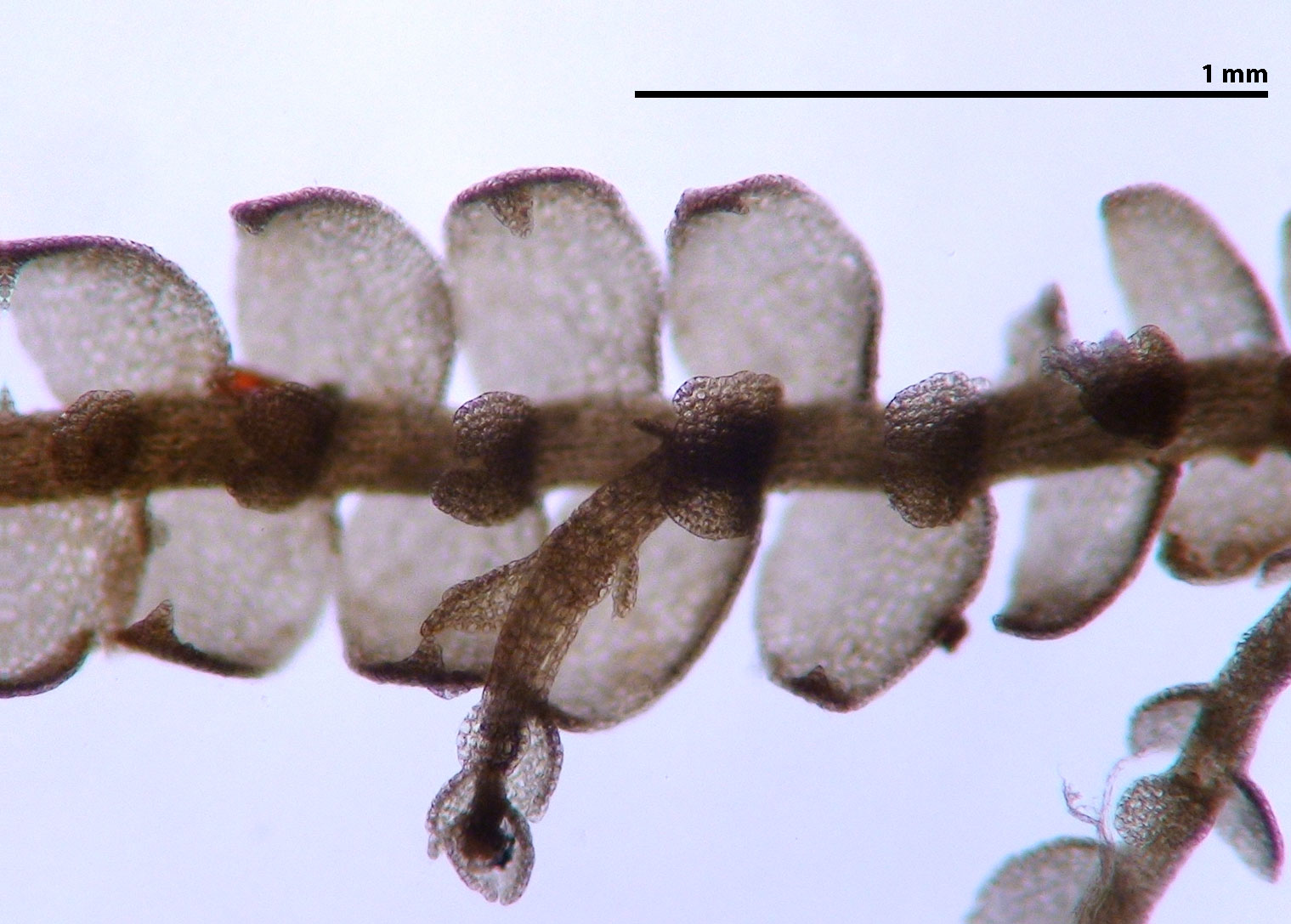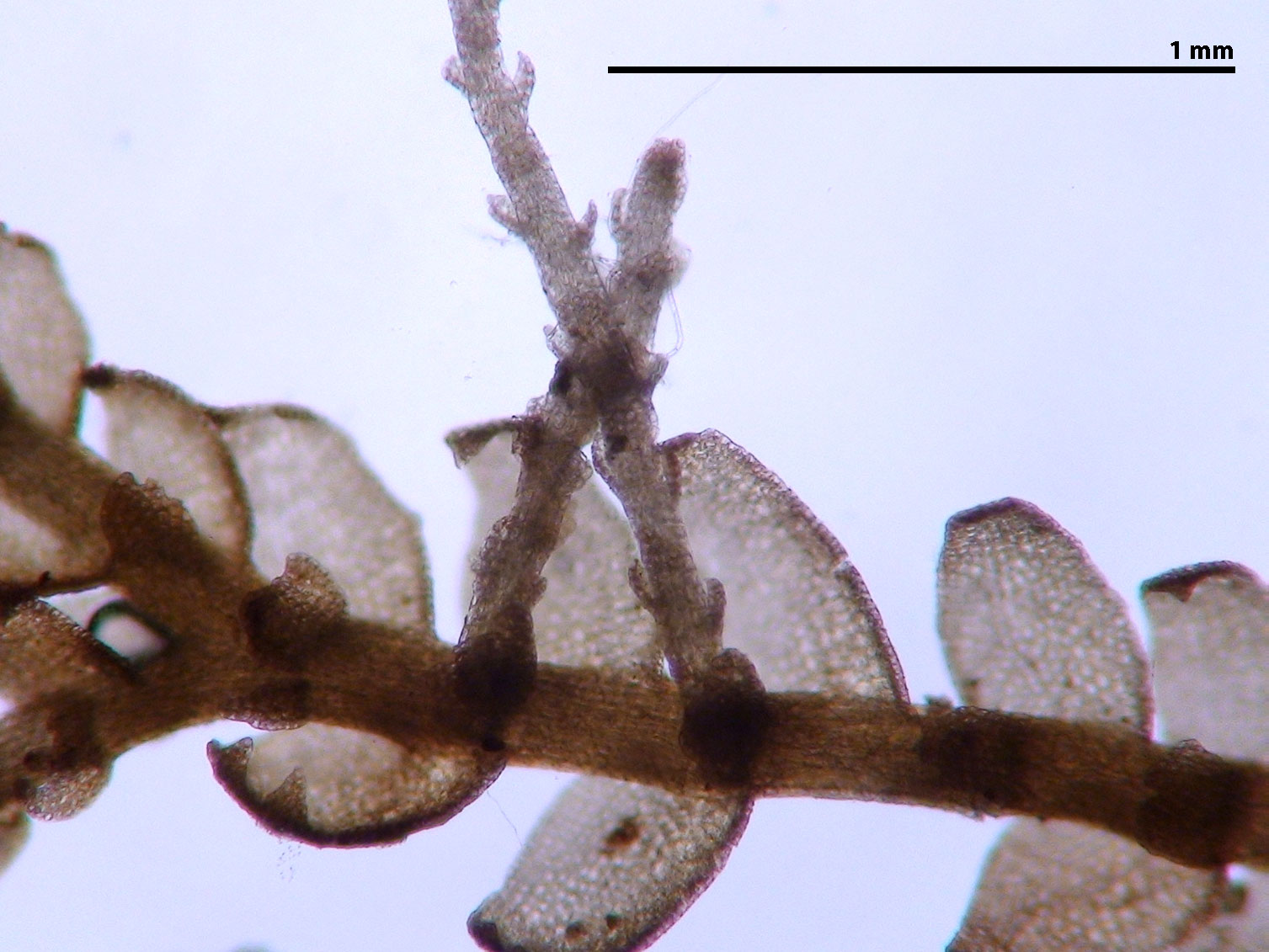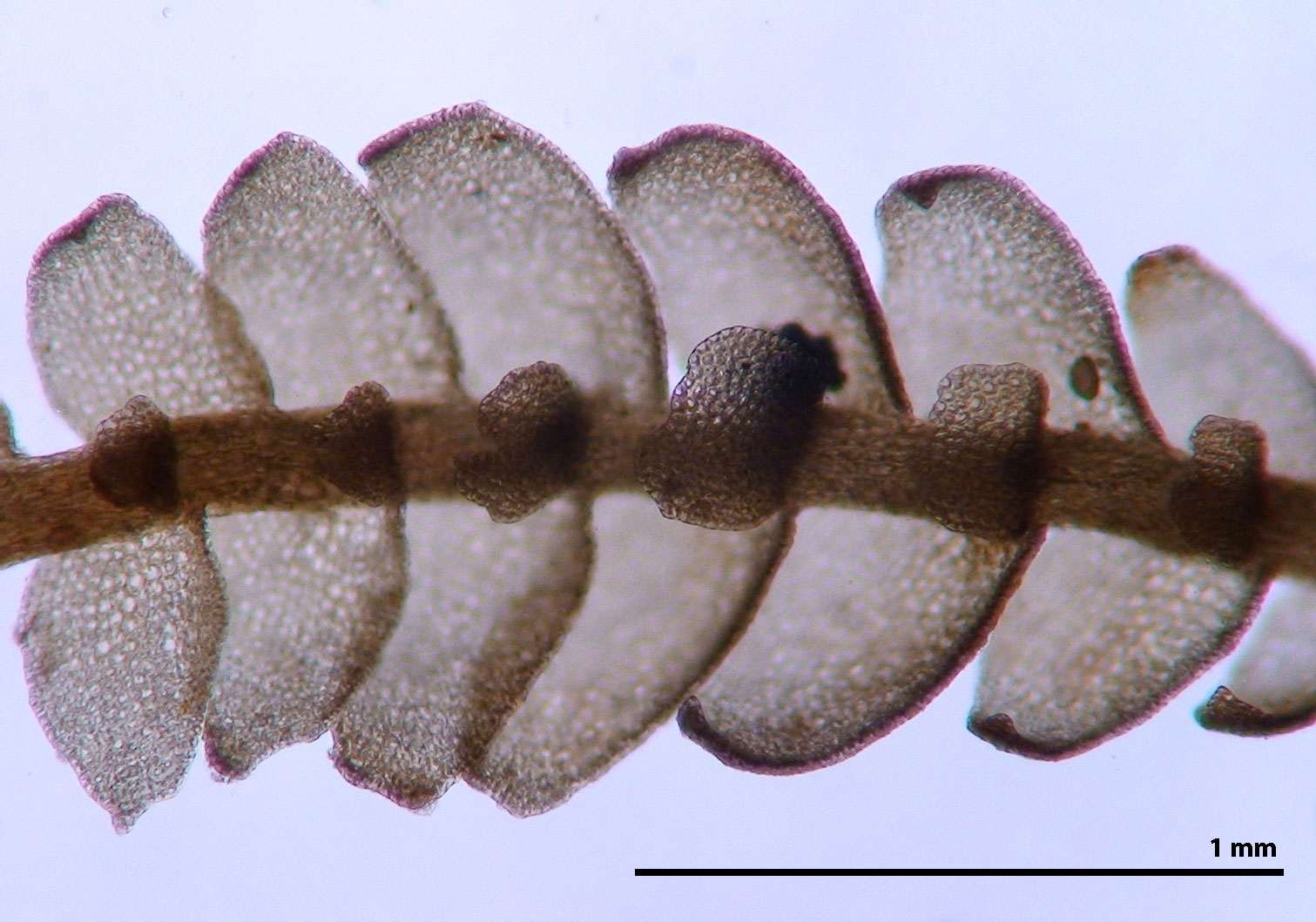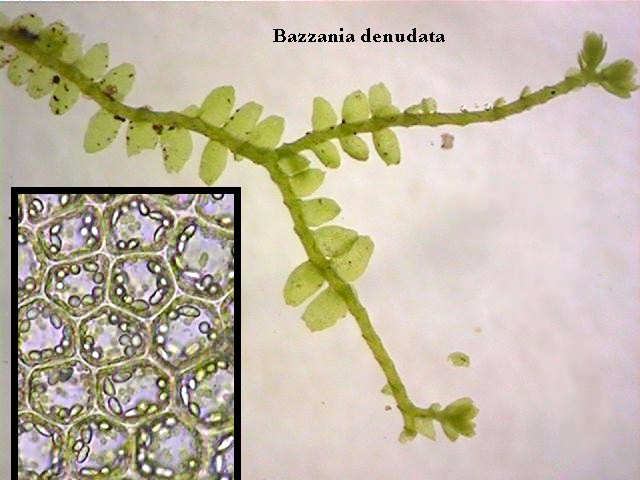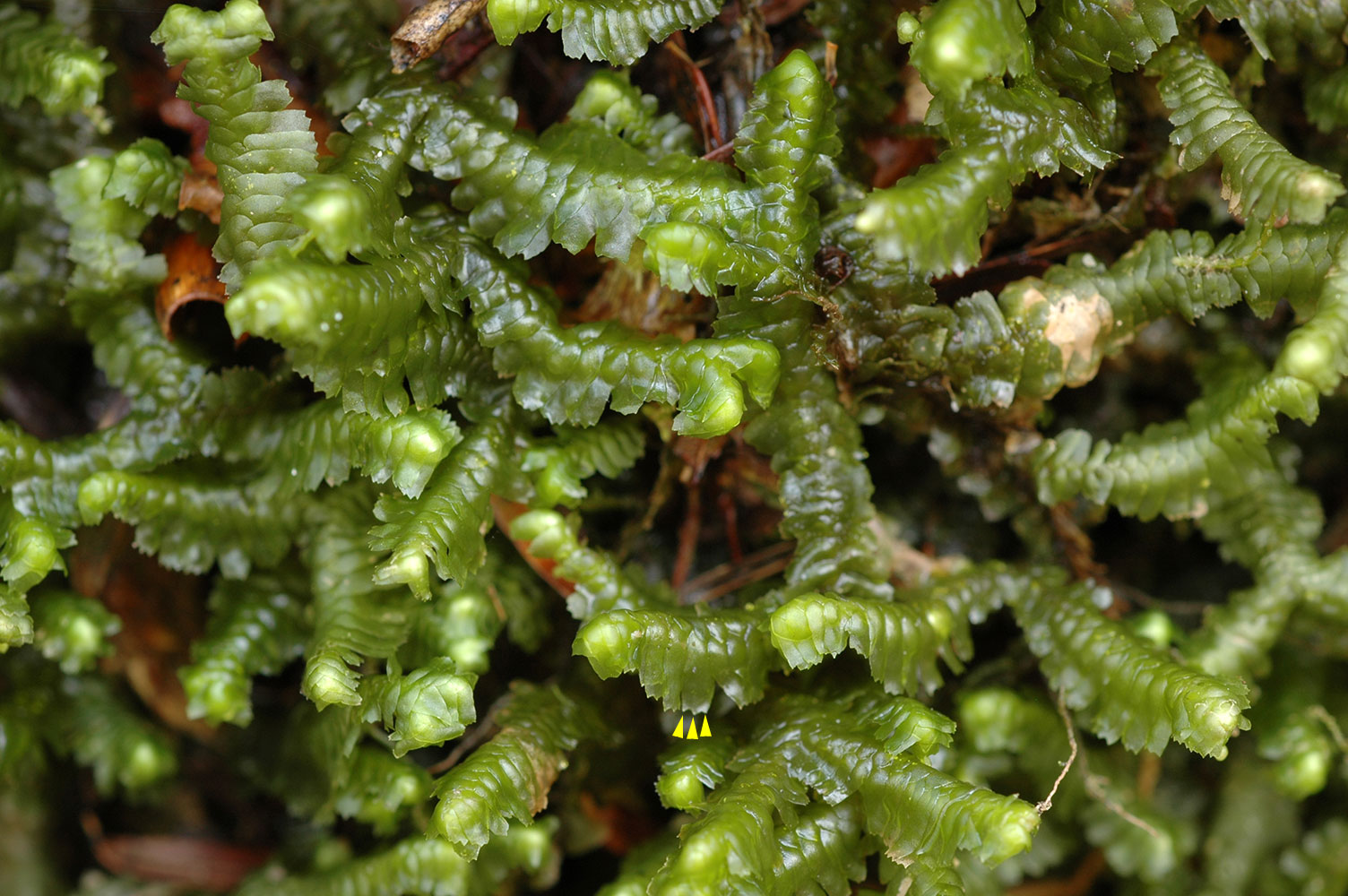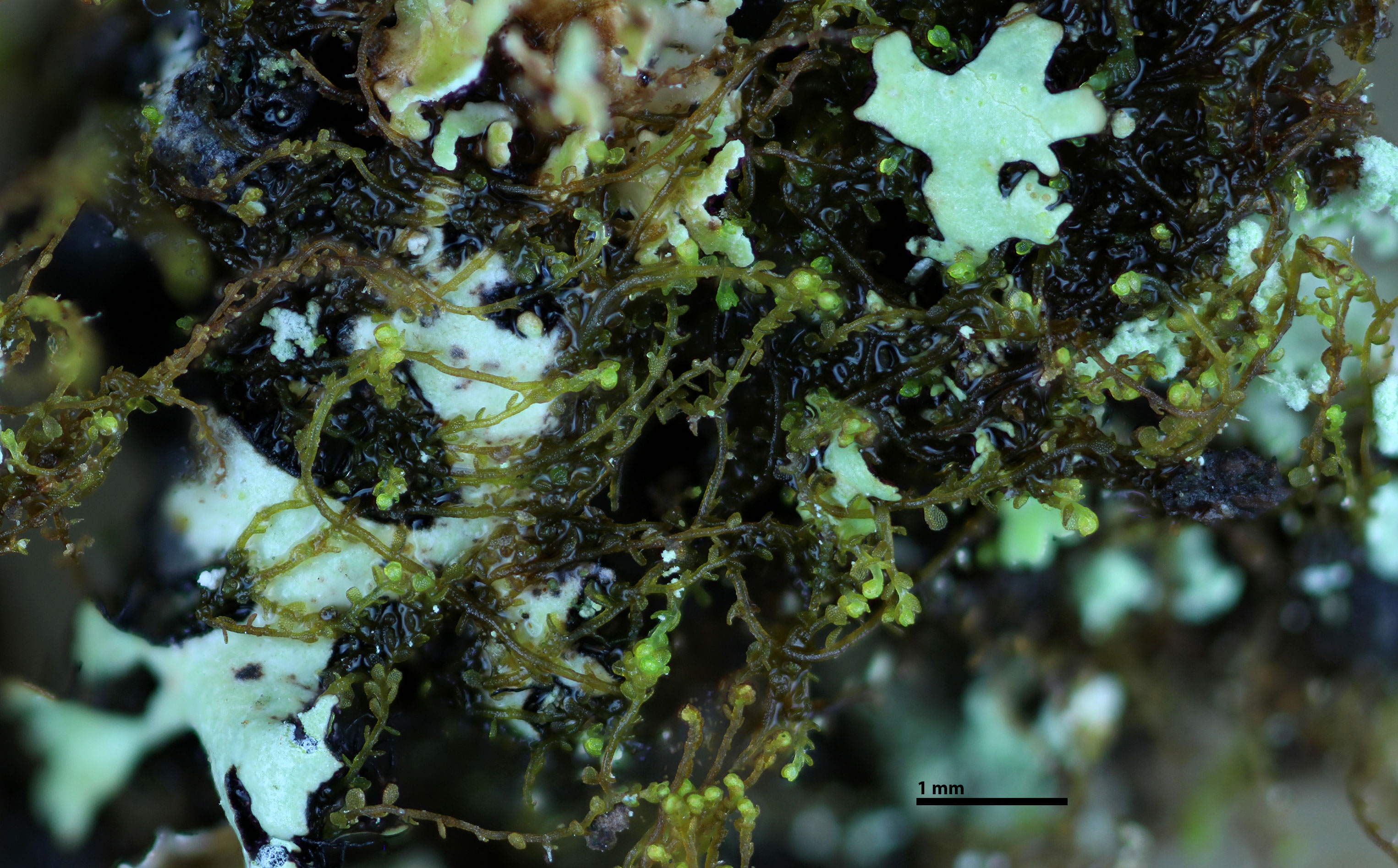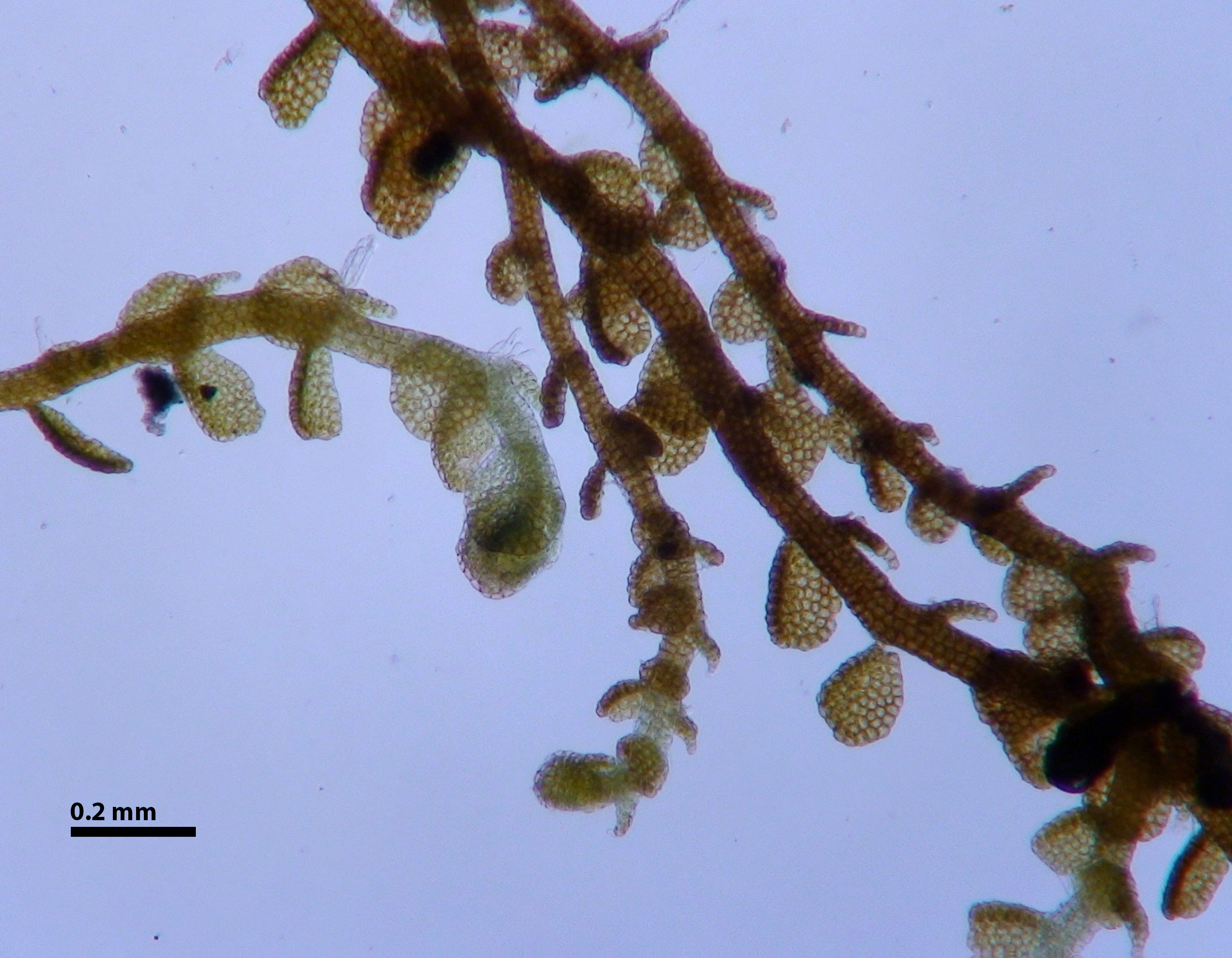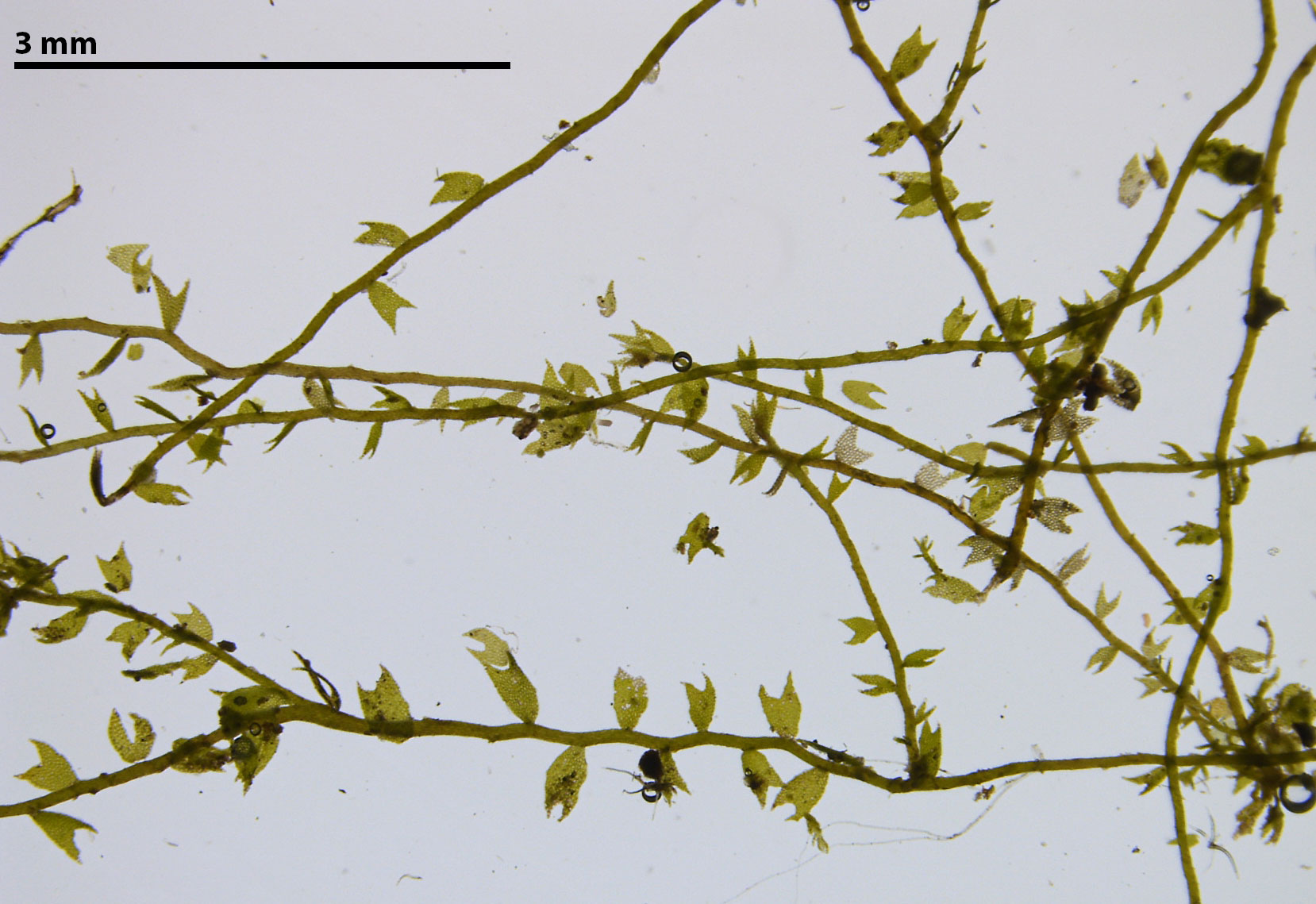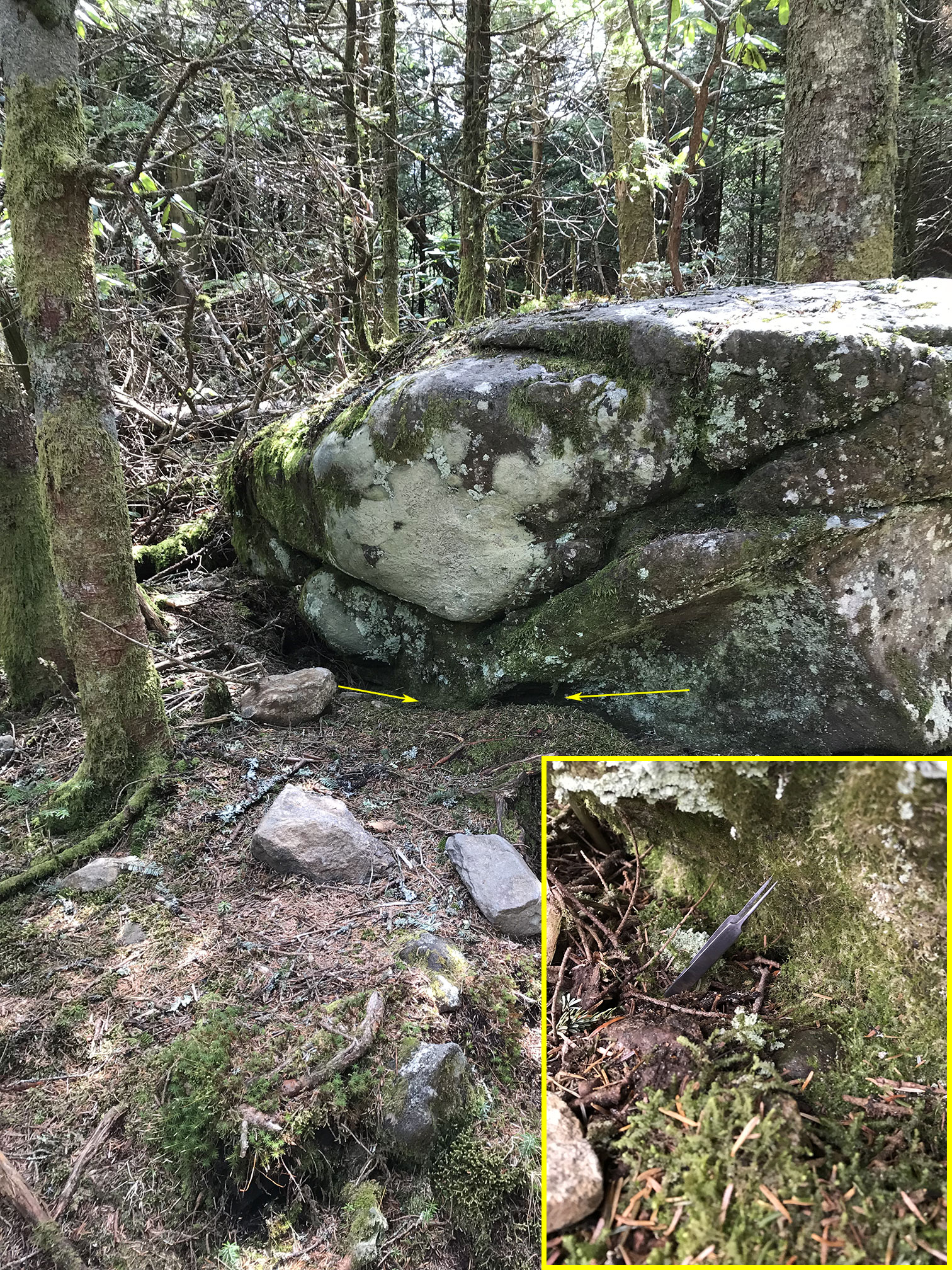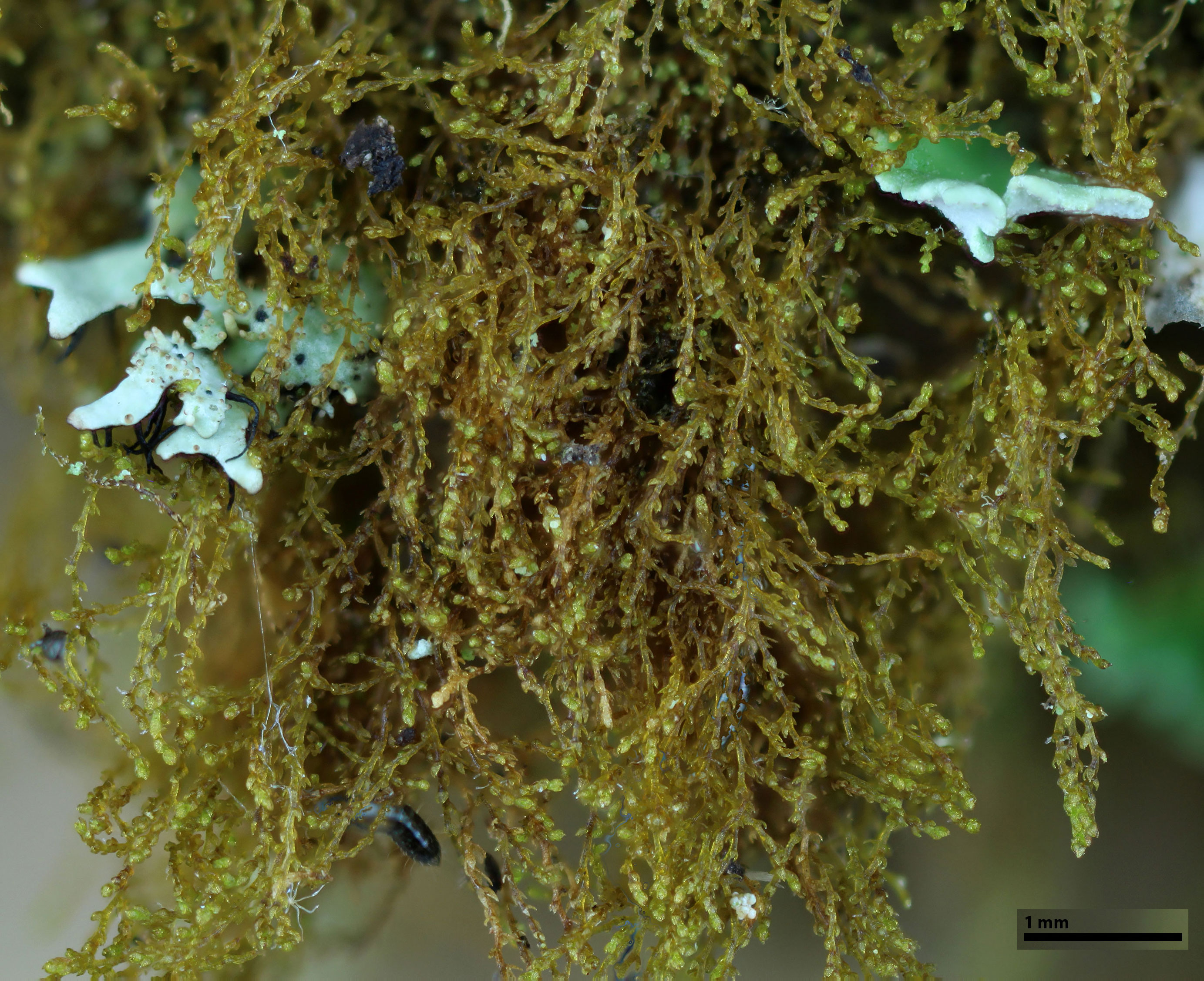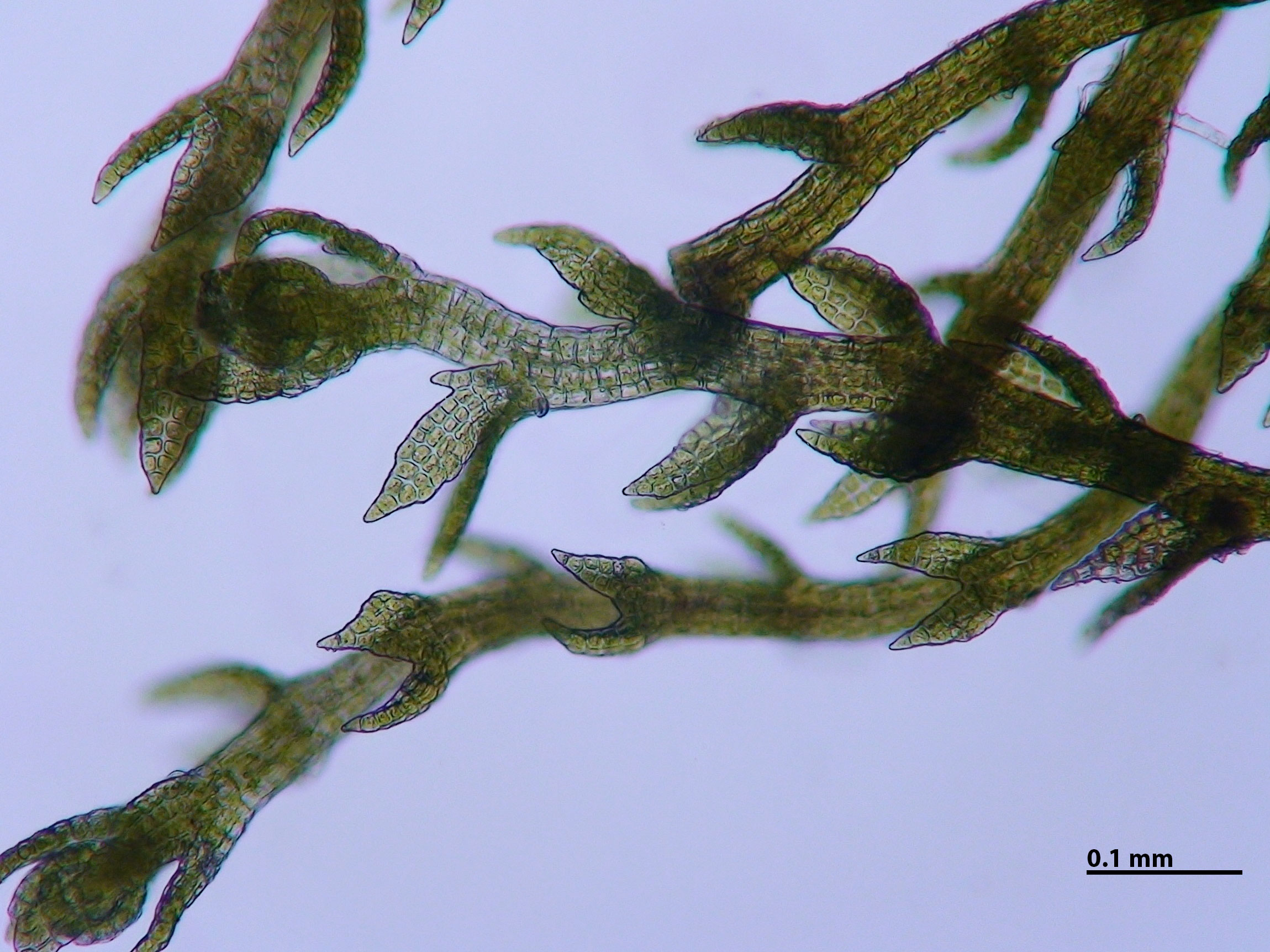Bazzania nudicaulis A. Evans
Family: Lepidoziaceae
Synonyms
none
NatureServe Conservation Status
G2G3
Distribution
Endemic to the Southern Appalachians. North Carolina, Tennessee, Virginia.
Although accepted as occurring in New York by Duncan and Slack (2017), notably without comment for such an exceptional expansion of the known range, we exclude New York from the distribution. The New York occurrence is based on a single specimen that we have not seen, Cutler, L. M. s.n., 22 Aug. 1971 (NYS).
Habitat
"Occurring only on the fog-shrouded summits of the highest peaks of the Appalachian system; rare below 5500 feet" (Schuster 1969, p. 81). Essentially limited to Fraser fir - red spruce forests and high elevation rocky summits with scattered occurrences in northern hardwood forests mostly above 5000 ft. Occurring on rock and the bark of Abies fraseri, Betula alleghaniensis, Picea rubens, Prunus pennsylvanica, and Sorbus americana (Davison et al. 1999). Also on humus over rock; occurrences on humus “appear restricted to exposed lofty mountain cliffs” (Schuster 1969, p. 82). High elevations (5000 – 6600 ft; lowest elevation, if correct, is listed in Schuster [1969, p. 81] as "Mt. LeConte, 4500 and 6590 ft (Sharp)").
On trees and rocks B. nudicaulis may occur with the following liverworts: Frullania asagrayana, Herbertus tenuis, Leptoscyphus cuneifolius, Microlejeunea ulicina, Plagiochila exigua, and Sphenolobopsis pearsonii; on rock B. tricrenata may be admixed (Schuster 1969).
Brief Description and Tips for Identification
Description from Fulford (1936) and Schuster (1969). Forming pendulous tufts or scattered over other bryophytes, brownish, rarely almost black. Individual shoots up to 1.5 mm wide, usually smaller. Shoots with two types of branches, 1) lateral, leafy branches and 2) ventral, flagelliform branches. Lateral leaves ovate-lanceolate with apices deflexed. Underleaves quadrate-orbicular, as wide as long and 2-3 times as wide as the stem. Lateral leaves and underleaves frequently caducous. Oil bodies (1)2-3(4) in cells of lateral leaves.
Dioicous? Sex organs unknown. Asexual reproduction by means of caducous leaves and underleaves.
Four species of Bazzania occur in the Southern Appalachians: B. denudata, B. nudicaulis, B. tricrenata, and B. trilobata. B. trilobata is the most common and robust species and is not likely to be confused with B. nudicaulis. B. trilobata, like B. denudata, lacks the deflexed leaf tips and brownish coloration typical of B. nudicaulis. B. trilobata and B. denudata also have a higher number of oil bodies (4-8) in cells of the lateral leaves. B. denudata does freely produce caducous leaves but the green color and higher oil body number prevent any confusion.
Differentiating B. tricrenata is more difficult. The two species share a similar size, brownish coloration, deflexed leaf tips, and low number of oil bodies per leaf cell [(1)2-3(4) oil bodies in B. nudicaulis, 2-4(5) in B. tricrenata, Schuster (1969). Paton (1999) described B. tricrenata with (1)2-6(8) oil bodies]. The two may occur together on shaded, damp rocks, but B. tricrenata fails to colonize the bark of trees well above the ground as typical of B. nudicaulis. Morphologically, the species differ in that B. tricrenata does not produce caducous leaves and, most critically, has underleaves wider than long and only 1.5 times as wide as the stem. B. nudicaulis underleaves are as long as wide and 2-3 times as wide as the stem.
Salient Features
- Caducous leaves and underleaves
- Underleaves as long as wide, 2-3 times as wide as stem
- Brownish color
- Deflexed lateral leaf apices
- Oil bodies (1)2-3(4) in cells of lateral leaves
References
Davison, P. G., McFarland, K. D., and Smith, D. K. 1999. RTE bryophyte survey of southern Appalachian Fraser fir forests, North Carolina, Tennessee, Virginia. Prepared for Natural Heritage Programs, North Carolina and Tennessee
Duncan, B., and Slack, N. G. 2017. New York State liverworts and hornworts: a distributional checklist by counties. Evansia, 34(3), 114-133.
Evans, A. W. 1923. Notes on North American Hepaticae. X. The Bryologist, 26(6), 55-67
Fulford, M. 1936. The genus Bazzania in the United States and Canada. American Midland Naturalist, 17(2), 385-424.
Paton, J.A. 1999. The Liverwort Flora of the British Isles. Harley Books, Martins, England
Schuster, R.M. 1969. The Hepaticae and Anthocerotae of North America East of the Hundredth Meridian. Volume II. Columbia University Press, New York
Schuster, R.M. 1980. The Hepaticae and Anthocerotae of North America East of the Hundredth Meridian. Volume IV. Columbia University Press, New York
